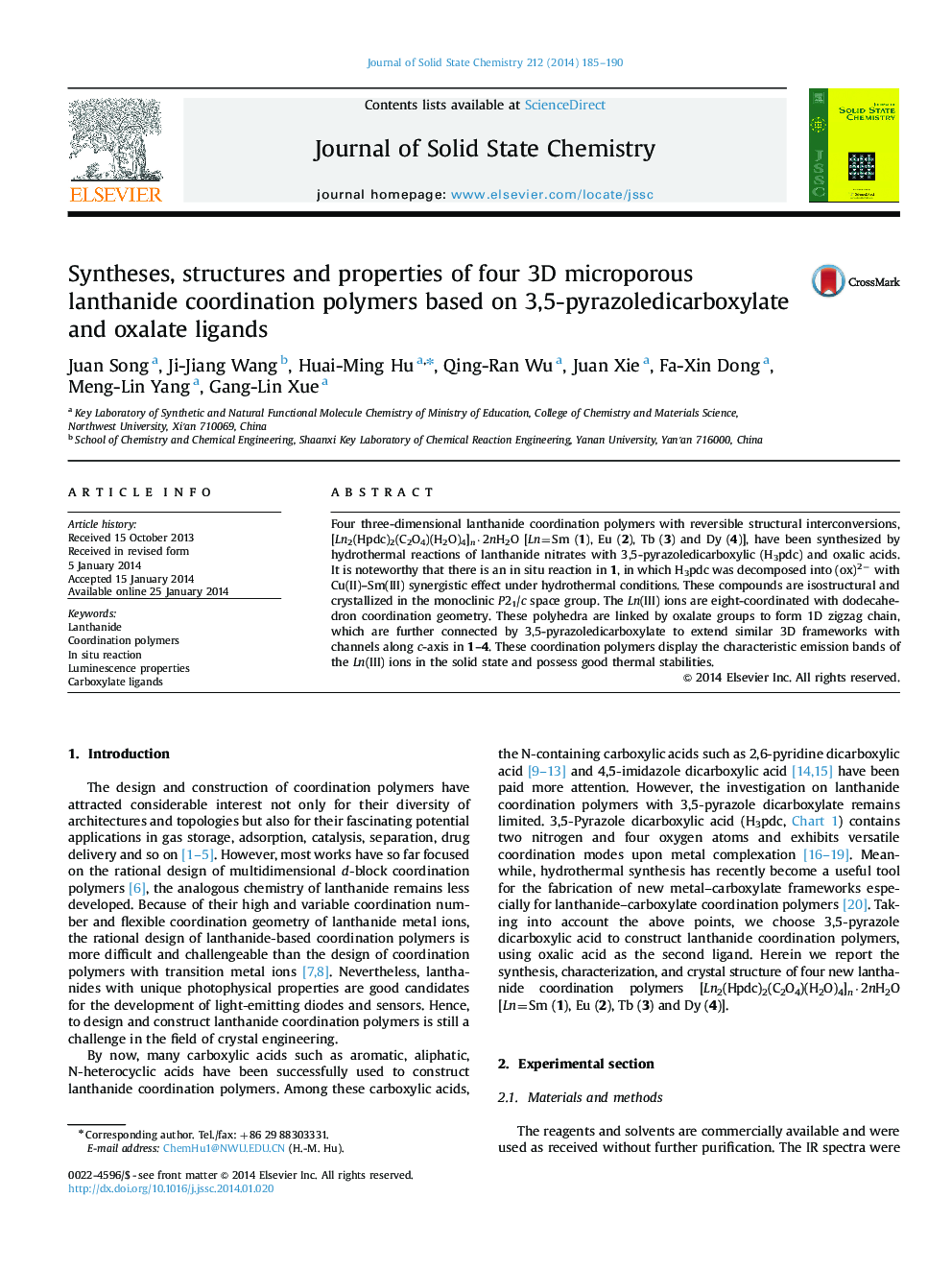| Article ID | Journal | Published Year | Pages | File Type |
|---|---|---|---|---|
| 1329876 | Journal of Solid State Chemistry | 2014 | 6 Pages |
•Four lanthanide coordination polymers have been hydrothermal synthesized.•There is an in situ reaction in 1 in which H3pdc was decomposed into (ox)2− with the Cu(II)–Sm(III) synergistic effect under hydrothermal conditions.•TGA and XRD studies reveal that upon hydration–dehydration, compounds 1–4 undergo a reversible structural interconversion process through a cooling-heating cycle.•Compounds 1–4 exhibit characteristic lanthanide-centered luminescence.
Four three-dimensional lanthanide coordination polymers with reversible structural interconversions, [Ln2(Hpdc)2(C2O4)(H2O)4]n·2nH2O [Ln=Sm (1), Eu (2), Tb (3) and Dy (4)], have been synthesized by hydrothermal reactions of lanthanide nitrates with 3,5-pyrazoledicarboxylic (H3pdc) and oxalic acids. It is noteworthy that there is an in situ reaction in 1, in which H3pdc was decomposed into (ox)2− with Cu(II)–Sm(III) synergistic effect under hydrothermal conditions. These compounds are isostructural and crystallized in the monoclinic P21/c space group. The Ln(III) ions are eight-coordinated with dodecahedron coordination geometry. These polyhedra are linked by oxalate groups to form 1D zigzag chain, which are further connected by 3,5-pyrazoledicarboxylate to extend similar 3D frameworks with channels along c-axis in 1–4. These coordination polymers display the characteristic emission bands of the Ln(III) ions in the solid state and possess good thermal stabilities.
Graphical abstractFour 3D microporous lanthanide coordination polymers with reversible structural interconversion have been synthesized. They exhibit characteristic emission bands of the lanthanide ions and possess great thermal stability. Figure optionsDownload full-size imageDownload as PowerPoint slide
